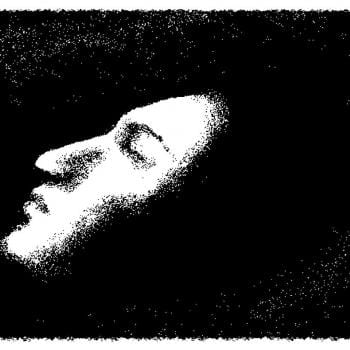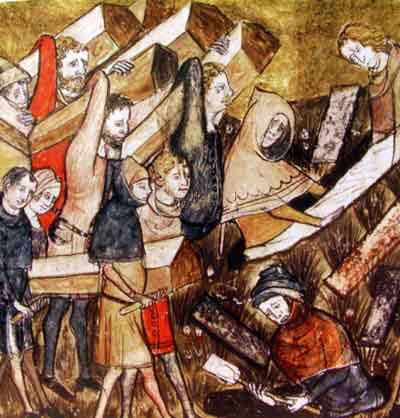- Trending:
- Pope Leo Xiv
- |
- Israel
- |
- Trump
- |
- Social Justice
- |
- Peace
- |
- Love

RELIGION LIBRARY
Baha'i
Sacred Time
For Baha'is, time is both linear and cyclical. It is linear in the sense that a person's life proceeds from beginning to end and humanity also develops and progresses socially. It is cyclical because for the individual, the religious year is a cycle of episodes of sacred time, while for humanity, religions go through a cycle of spring, summer, autumn, and winter before a new religion arises to repeat the cycle. For Baha'is, human history has been a long slow progressive unfolding of the potentialities inherent in the human race under the guidance of successive Manifestations of God. Perhaps the combination of the linear and the cyclical in an ascending spiral would be the best representation. The present day is of particular significance because it represents the fulfillment of the prophecies of all of the world religions and is the time when humanity achieves its collective maturity.
The Baha'i Faith has its own calendar and starts the year with the equinox (spring for the northern hemisphere and autumn for the southern, i.e., March 21). The first year of this calendar began on March 21, 1844. There are nineteen months of nineteen days each and either four or five intercalary days before the last month to make the year comply with the solar cycle. The names of the days and of the months are all names and attributes of God.
| The Cycle of Religion; from a talk of 'Abdu'l-Baha at the Church of the Divine Paternity, New York, New York, May 1912 |
|
The divine religions are like the progression of the seasons of the year. When the earth becomes dead and desolate and because of frost and cold no trace of vanished spring remains, the springtime dawns again and clothes everything with a new garment of life. The meadows become fresh and green, the trees are adorned with verdure and fruits appear upon them. Then the winter comes again, and all the traces of spring disappear. This is the continuous cycle of the seasons -- spring, winter, then the return of spring. But though the calendar changes and the years move forward, each springtime that comes is the return of the springtime that has gone; this spring is the renewal of the former spring. Springtime is springtime, no matter when or how often it comes. The divine Prophets are as the coming of spring, each renewing and quickening the teachings of the Prophet Who came before Him. Just as all seasons of spring are essentially one as to newness of life, vernal showers and beauty, so the essence of the mission and accomplishment of all the Prophets is one and the same. Now the people of religion have lost sight of the essential reality of the spiritual springtime. They have held tenaciously to ancestral forms and imitations, and because of this there is variance, strife and altercation among them. ('Abdu'l-Baha, Promulgation of Universal Peace, pp. 126-7) |
| MONTHS OF THE BAHA'I YEAR | ||
| Baha'i month | Translation | Begins |
| Bahá | Splendour | 21 March |
| Jalál | Glory | 9 April |
| Jamál | Beauty | 28 April |
| 'Azamat | Grandeur | 17 May |
| Núr | Light | 5 June |
| Rahmat | Mercy | 24 June |
| Kalimát | Words | 13 July |
| Kamál | Perfection | 1 August |
| Asmá' | Names | 20 August |
| 'Izzat | Might | 8 September |
| Mashíyyat | Will | 27 September |
| 'Ilm | Knowledge | 16 October |
| Qudrat | Power | 4 November |
| Qawl | Speech | 23 November |
| Masá'il | Questions | 12 December |
| Sharaf | Honour | 31 December |
| Sultán | Sovereignty | 19 January |
| Mulk | Dominion | 7 February |
| 'Alá' | Loftiness | 2 March |
There are regular occasions throughout the year on which the Baha'i community comes together to worship or commemorate a holy day. The foundation of Baha'i community life is the Nineteen-Day Feast, when the whole community meets on the first day of each Baha'i month. This meeting consists of a devotional part, during which prayers and readings from the scriptures are read. There is then a period of community consultation during which everyone is free to bring up any matter that they feel is of concern. There are usually also reports and communications from Baha'i institutions during this period. The final part of the meeting is a social portion during which refreshments are offered, and there may also be music and other cultural activities.
Baha'is also gather to commemorate their holy days. There are nine holy days on which work should be suspended and another two on which it is not necessary to suspend work. These holy days commemorate the births, the deaths, and the declarations of the missions of the Bab and Baha'u'llah, as well as the New Year's Day, which is called Naw-Ruz (New Day, March 21st). There is no set form or ritual for these meetings and Baha'is will usually select a number of relevant prayers and readings. For purposes of religious commemorations, the day begins at sunset and so these meetings can be held on the evening before the day on which they fall. Some holy days, such as the Declaration of the Bab or the Ascension (death) of Baha'u'llah, are commemorated at the precise time that they occurred.
| BAHA'I HOLY DAYS | |
| Days on which work should be suspended: | |
| Naw-Rúz (New year) | 21 March |
| Ridván - first day | 21 April |
| Ridván - ninth day | 29 April |
| Ridván - twelfth day | 2 May |
| The Báb's declaration of his mission | 23 May |
| Passing of Bahá'u'lláh | 29 May |
| Martyrdom of the Báb | 9 July |
| Birth of the Báb | 20 October |
| Birth of Bahá'u'lláh | 12 November |
| Days on which work is permitted: | |
| Day of the Covenant | 26 November |
| Passing of 'Abdu'l-Baha | 28 November |
The most important period of sacred time in the annual calendar is the Festival of Ridvan (pronounced "Rezvaan"), which is a twelve-day period (April 21 - May 2) commemorating Baha'u'llah's declaration of his mission in Baghdad in 1863. The first, ninth, and twelfth day of this period are among the nine holy days. All Baha'i elections, at the local, national, and international level are usually held in this period.
All those Baha'is who have the financial means and are not barred in any other way are obliged to perform a pilgrimage. Pilgrimage is a sacred time to be used for spiritual renewal. Another period that is of particular significance as a time for spiritual renewal is the nineteen days of the Baha'i Fast (March 2-20). For each Baha'i, the day also has certain periods marked out as sacred time: the time set aside for the obligatory prayers, for meditation, and for reading the scriptures.
In a sense, however, the Bab and Baha'u'llah wanted their followers to transform as much of their time as possible into sacred time. For example, Baha'u'llah states that some activities usually considered secular, such as parenting and one's occupation, should be consecrated to God and be performed in service to humanity, thus transforming them into acts of worship and bringing them into sacred time. With spiritual discipline and training, it becomes possible to spend more and more of one's life in that spiritual world which is the divine presence, thus transforming secular or profane time into sacred time. This can be done without isolating oneself in monastic or ascetic environments and without neglecting one's social and family responsibilities; indeed those very activities assist individual human beings in their spiritual progress.
Study Questions:
1. How do Baha'is look at humanity’s history?
2. What gathering is the foundation of Baha'i community life and what happens at this gathering?
3. How many Baha'i holy days are there and which are the most important?
4. In what way does secular time become sacred time for a Baha’i?










